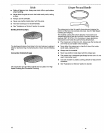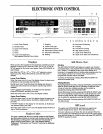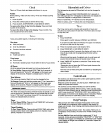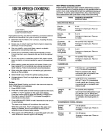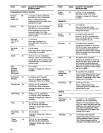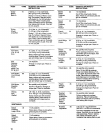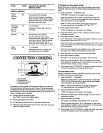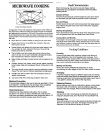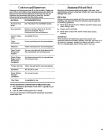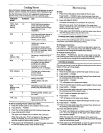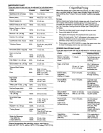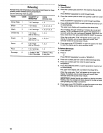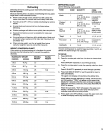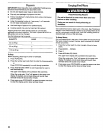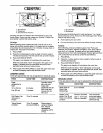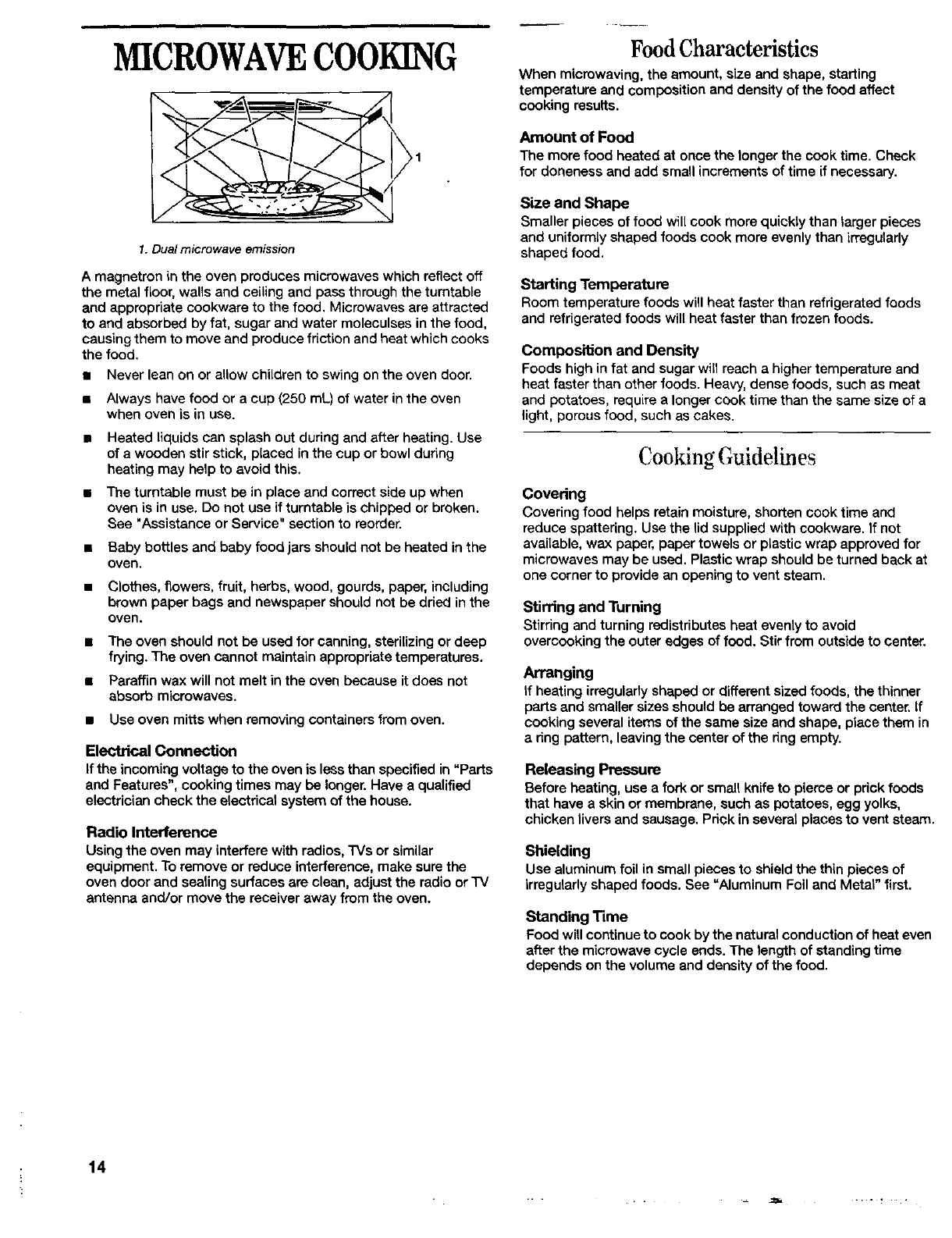
MICROWAVECOOKING
1. Dual microwave emission
A magnetron in the oven produces microwaves which reflect off
the metal floor, walls and ceiling and pass through the turntable
and appropriate cookware to the food. Microwaves are attracted
to and absorbed by fat, sugar and water moleculses in the food,
causing them to move and produce friction and heat which cooks
the food.
• Never lean on or allow children to swing on the oven door.
• Always have food or a cup (250 mL) of water in the oven
when oven is in use.
• Heated liquids can splash out during and after heating. Use
of a wooden stir stick, placed in the cup or bowl during
heating may help to avoid this.
• The turntable must be in place and correct side up when
oven is in use. Do not use if turntable is chipped or broken.
See "Assistance or Service" section to reorder.
Baby bottles and baby food jars should not be heated in the
oven.
Clothes, flowers, fruit, herbs, wood, gourds, paper, including
brown paper bags and newspaper should not be dried in the
oven.
• The oven should not be used for canning, sterilizing or deep
frying. The oven cannot maintain appropriate temperatures.
• Paraffin wax will not melt in the oven because it does not
absorb microwaves.
• Use oven mitts when removing containers from oven.
Electrical Connection
Ifthe incoming voltage to the oven isless than specified in "Parts
and Features", cooking times may be longer. Have a qualified
electrician check the electrical system of the house.
Radio Interference
Using the oven may interfere with radios, TVs or similar
equipment. To remove or reduce interference, make sure the
oven door and sealing surfaces are clean, adjust the radio or "IV
antenna and/or move the receiver away from the oven.
Food Characteristics
When microwaving, the amount, size and shape, starting
temperature and composition and density of the food affect
cooking results.
Amount of Food
The more food heated at once the longer the cook time. Check
for doneness and add small increments of time if necessary.
Size and Shape
Smaller pieces of food will cook more quickly than larger pieces
and uniformly shaped foods cook more evenly than irregularly
shaped food.
Starting Temperature
Room temperature foods will heat faster than refrigerated foods
and refrigerated foods will heatfaster than frozen foods.
Composition and Density
Foods high in fat and sugar will reach a higher temperature and
heat faster than other foods. Heavy, dense foods, such as meat
and potatoes, require a longer cook time than the same size of a
light, porous food, such as cakes.
Cooking Guidelines
Covering
Covering food helps retain moisture, shorten cook time and
reduce spattering, Use the lid supplied with eookware. If not
available, wax paper, paper towels or plastic wrap approved for
microwaves may be used. Plastic wrap should be turned back at
one corner to provide an opening to vent steam.
Stirring and Turning
Stirring and turning redistributes heat evenly to avoid
overeooking the outer edges of food. Stir from outside to center.
Arranging
if heating irregularly shaped or different sized foods, the thinner
parts and smaller sizes should be arranged toward the center. If
cooking several items of the same size and shape, place them in
a ring pattern, leaving the center of the ring empty.
Releasing Pressure
Before heating, use a fork or small knife to pierce or prick foods
that have a skin or membrane, such as potatoes, egg yolks,
chicken livers and sausage, Prick in several places to vent steam.
Shielding
Use aluminum foil in small pieces to shield the thin pieces of
irregularly shaped foods. See "Aluminum Foil and Metal" first.
Standing Time
Food will continue to cook by the natural conduction of heat even
after the microwave cycle ends. The length of standing time
depends on the volume and density of the food.
14
... . . _ ......



